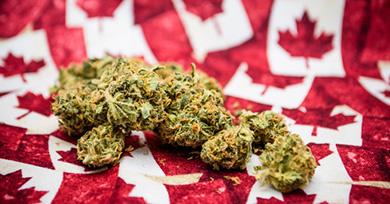
Breadcrumb
- Home
- Search a publication
- Cannabis legalisation and regulations in Canada....
Following Uruguay in 2013, Canada is the second country in the world - the first in G7 - that has officially legalised the production, distribution and possession of cannabis for recreational use.

Starting October 17, 2018, Canadian adults have been legally able to purchase recreational cannabis produced under licence, to possess up to 30 grams of cannabis and, in most provinces, to grow up to four cannabis plants at home.
Canada is the first federal state to propose a decentralised model for the regulation of cannabis. The federal Cannabis Act has introduced an approach focused on public health and youth safety: it creates a strict legal framework to control the production, distribution, sales and possession of cannabis throughout Canada.
Federal, provincial and territorial governments share responsibility for overseeing the cannabis regulation system. Conspicuously, provinces and territories have had to figure out their own regulation systems for the distribution and sale of cannabis and all related safety measures (for the minimum legal age, quantities and place of purchase or use, etc.), whereas municipalities have the possibility to control use at local level, even though it remains illegal to transport cannabis outside Canadian borders (regardless of quantity).
The implementation of this reform involves various jurisdiction levels and diverse regulation systems across the country.
This overview describes the reform process, the objectives of the new legislation and the market control mechanisms implemented in Canada, before identifying the watch-points to be monitored.